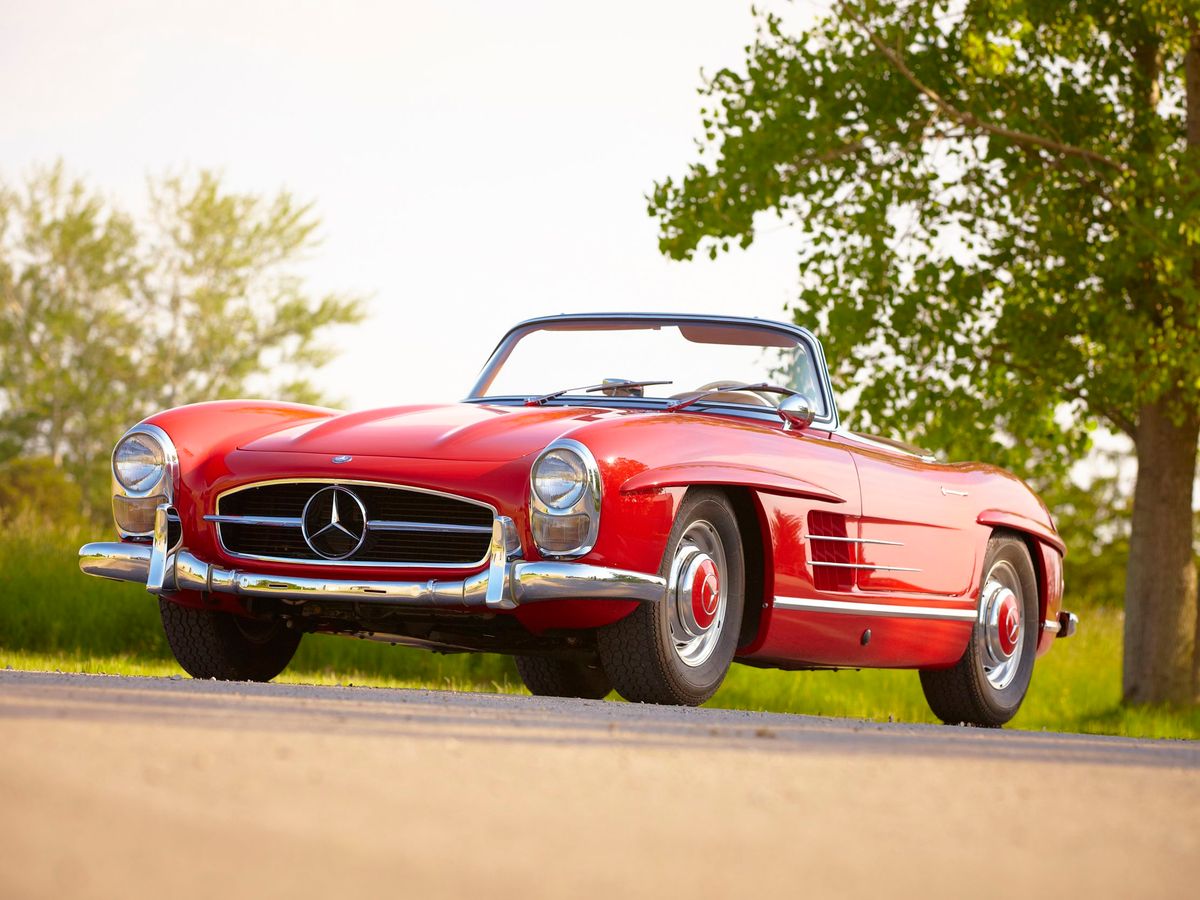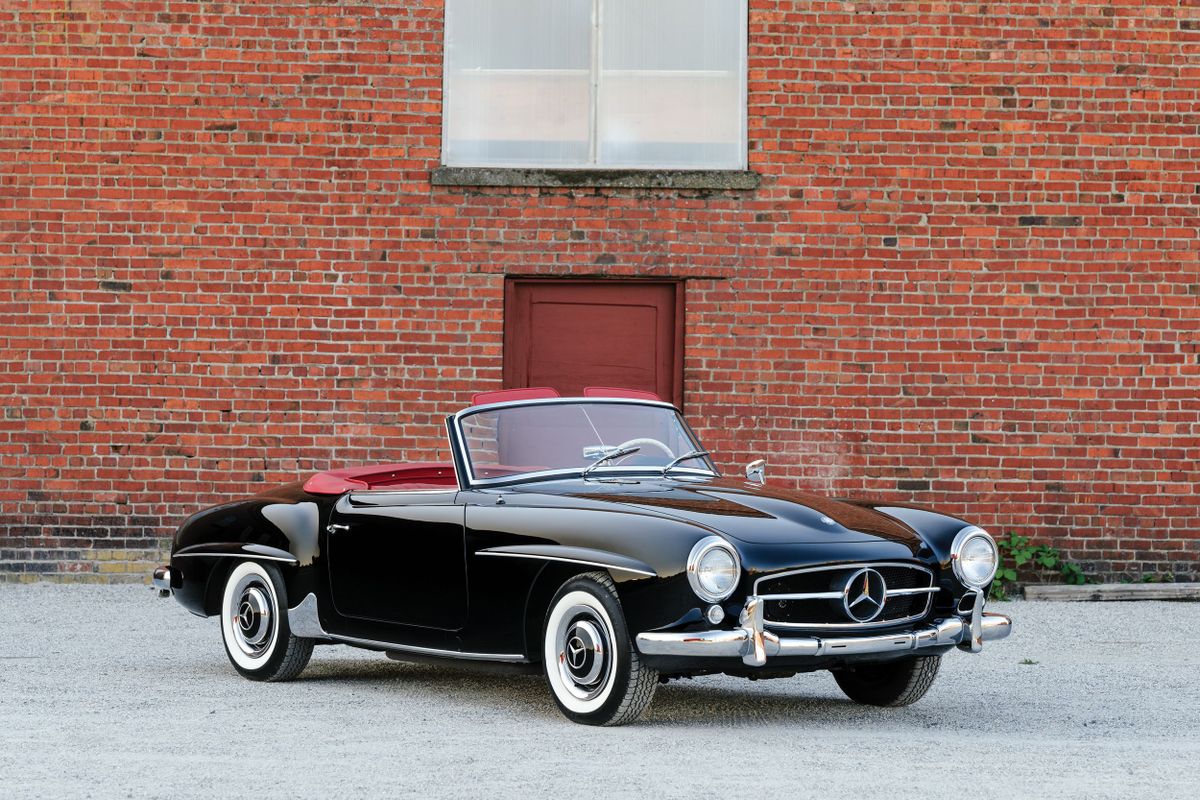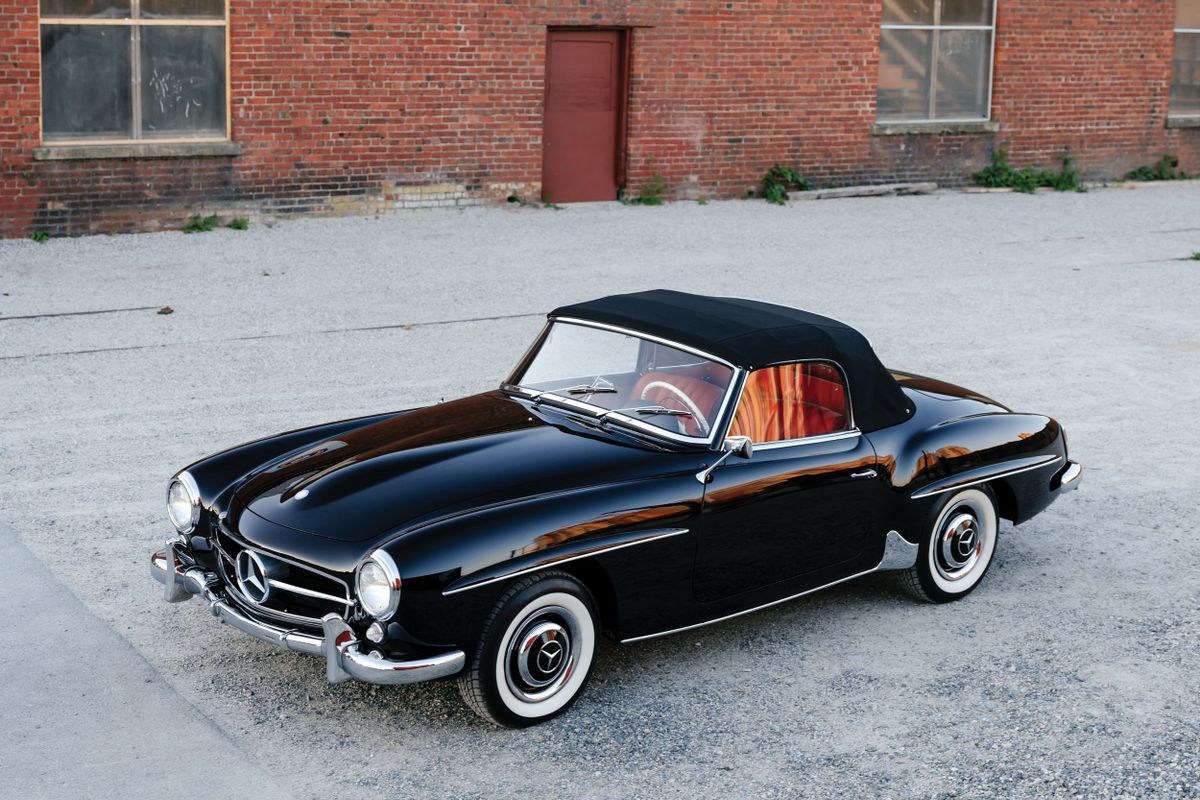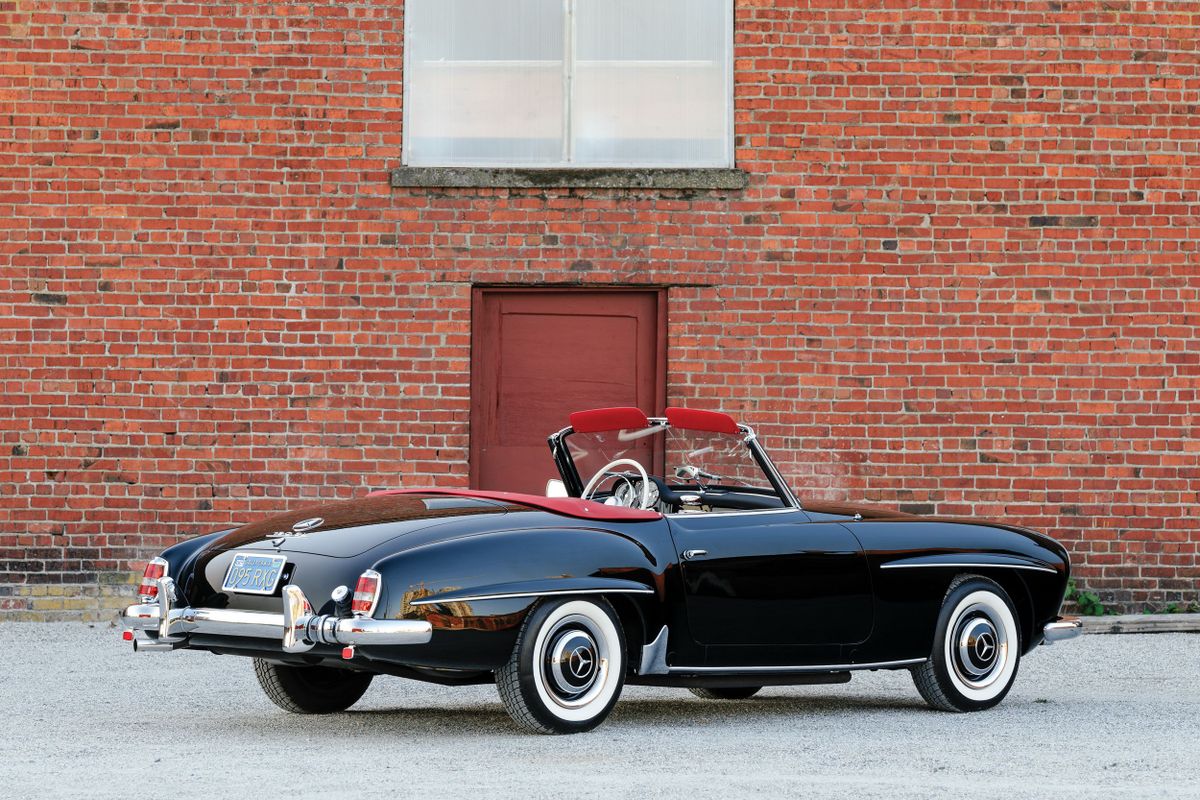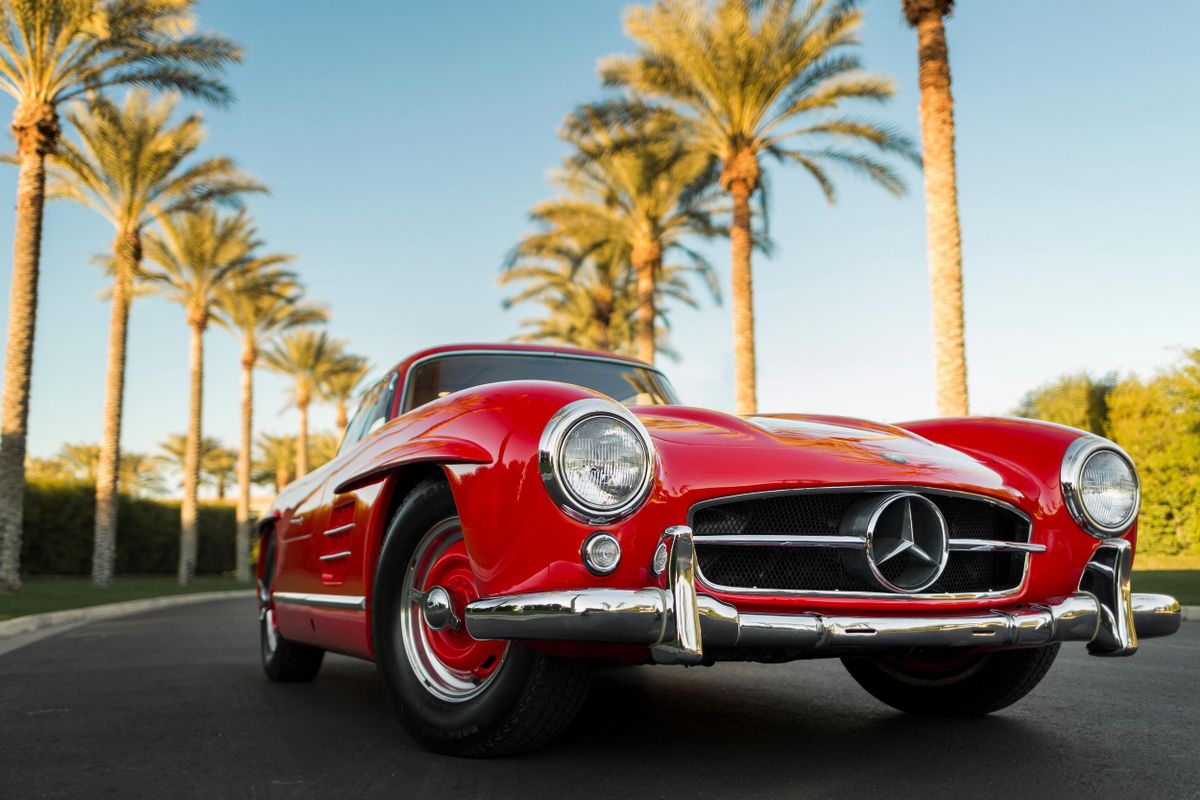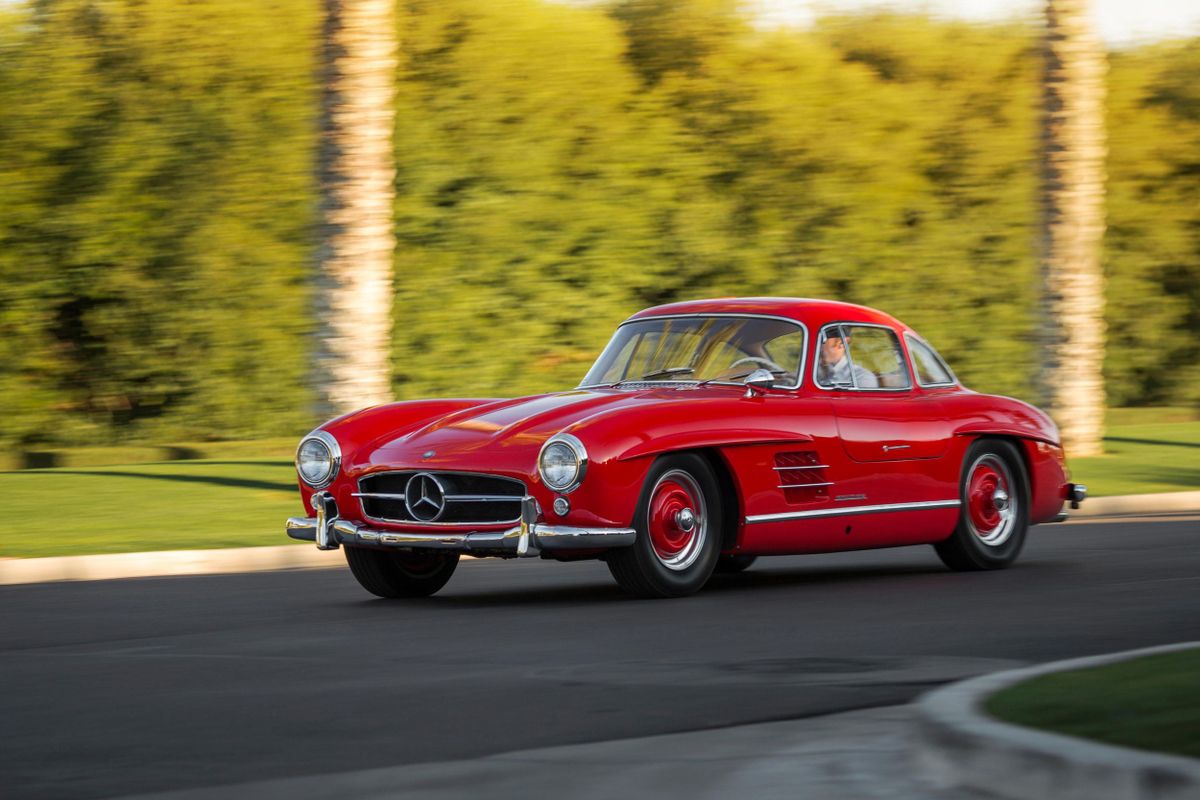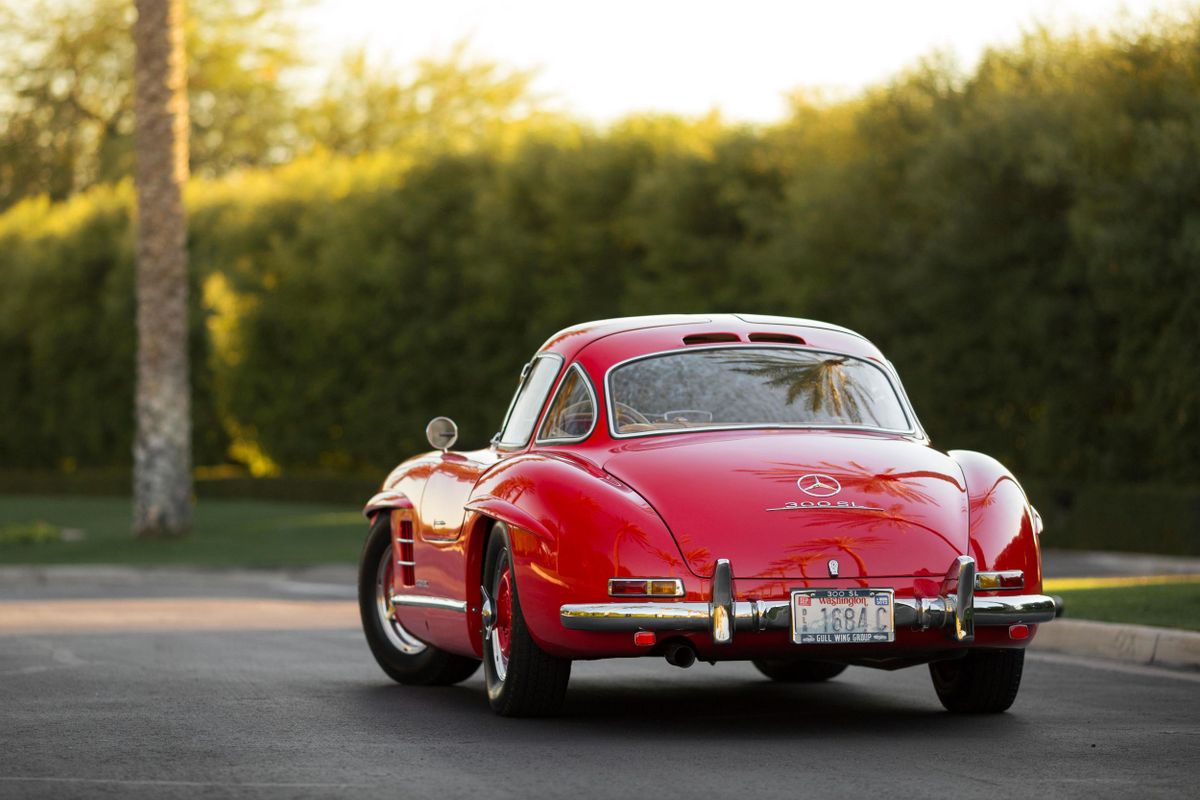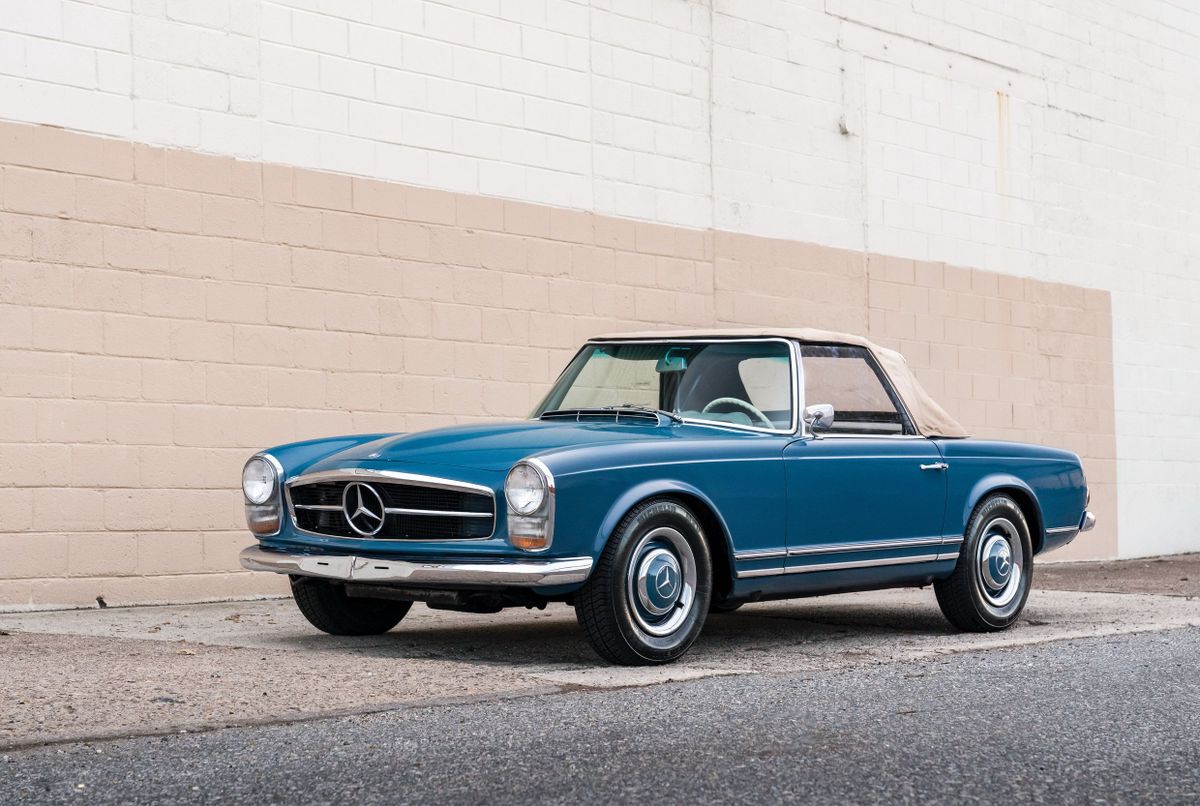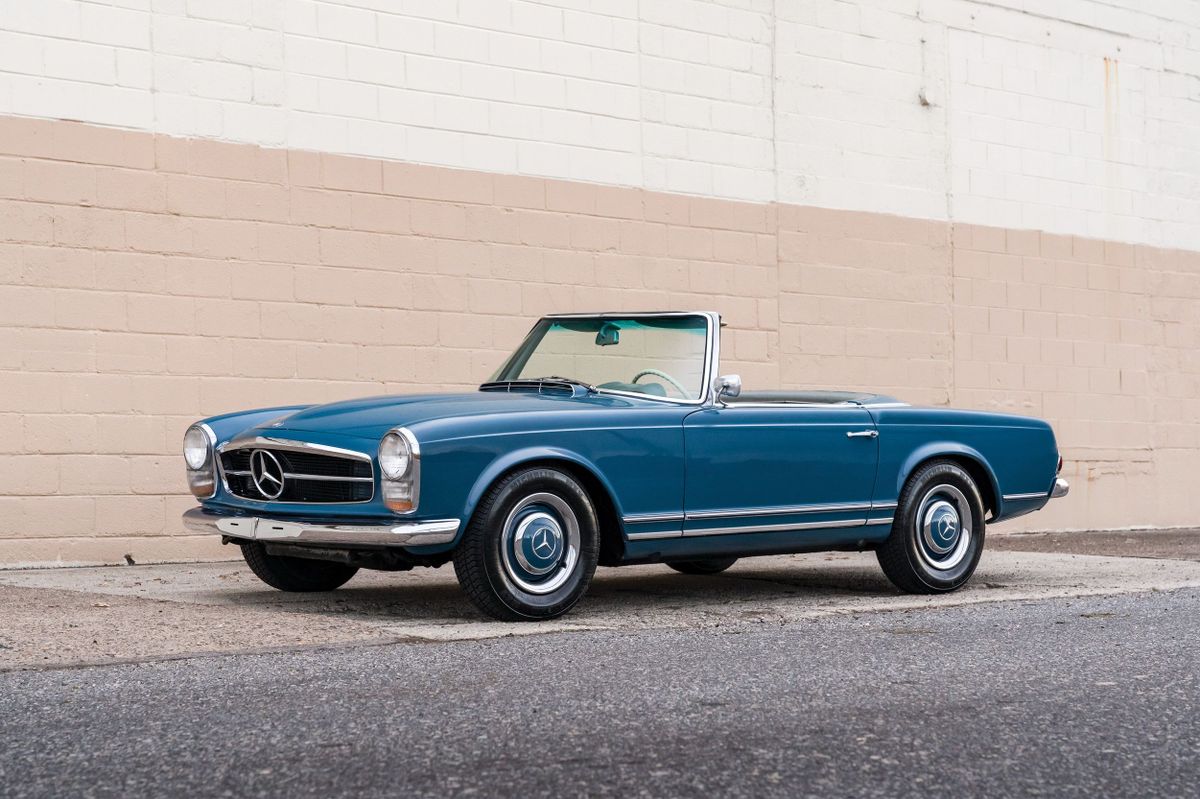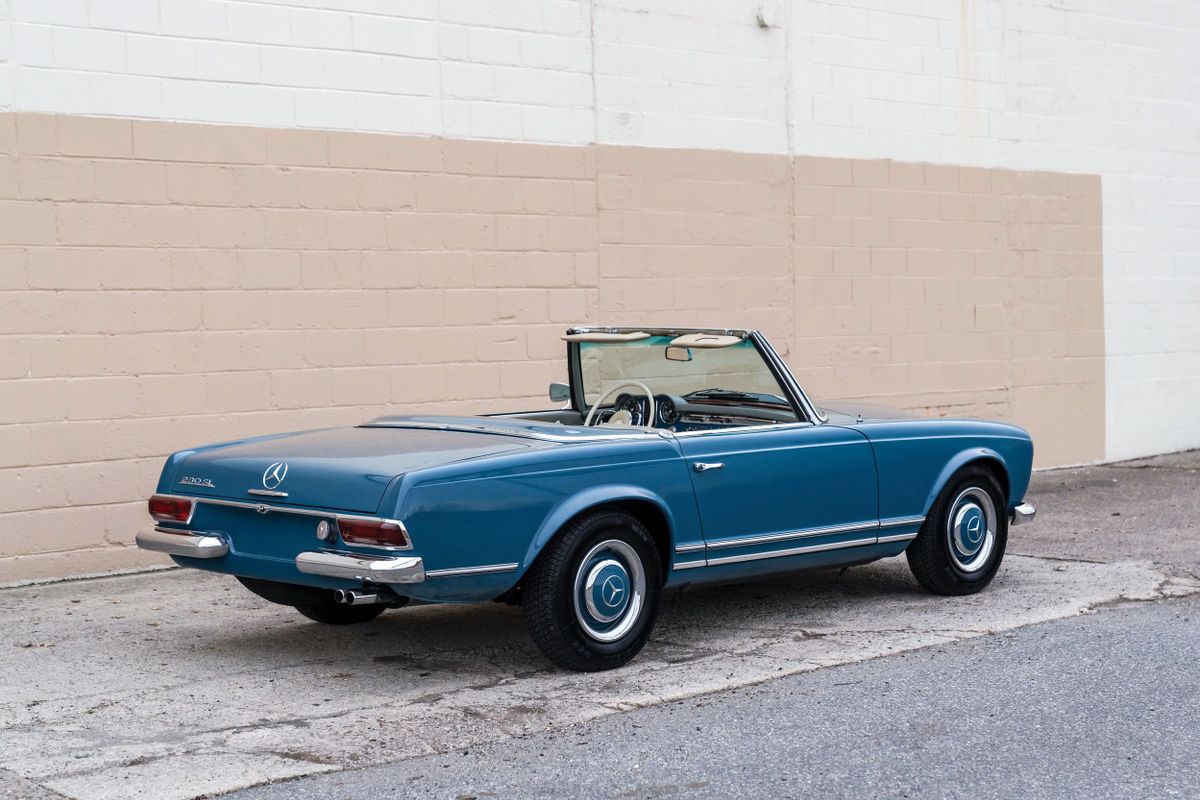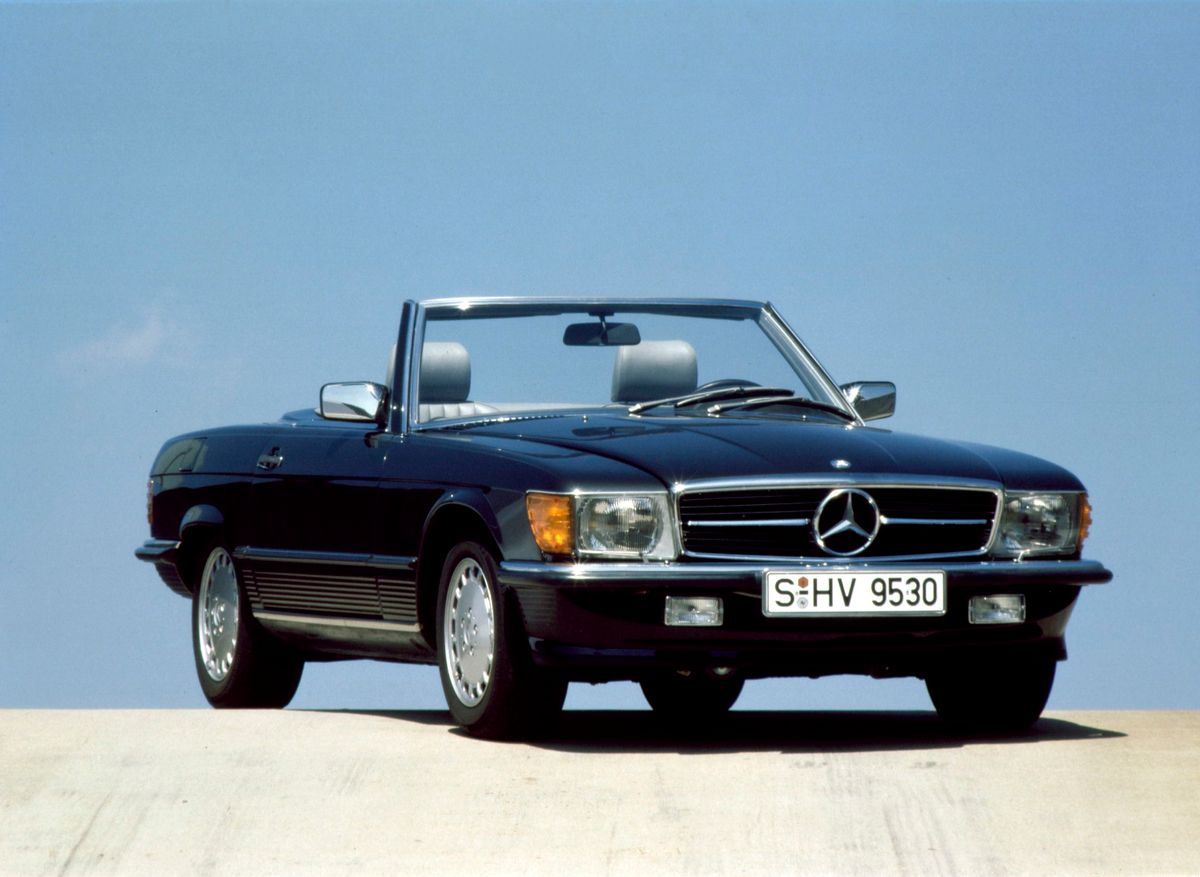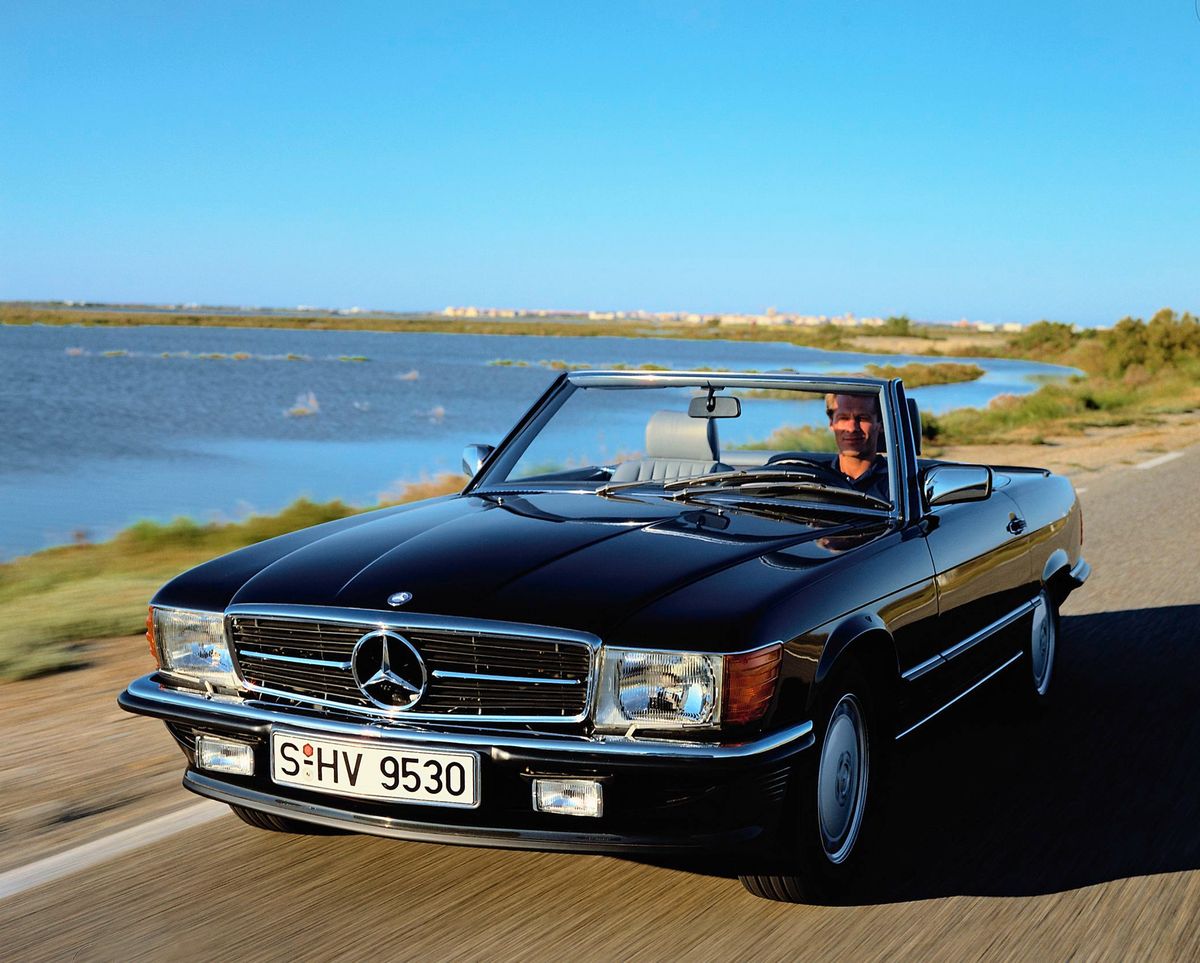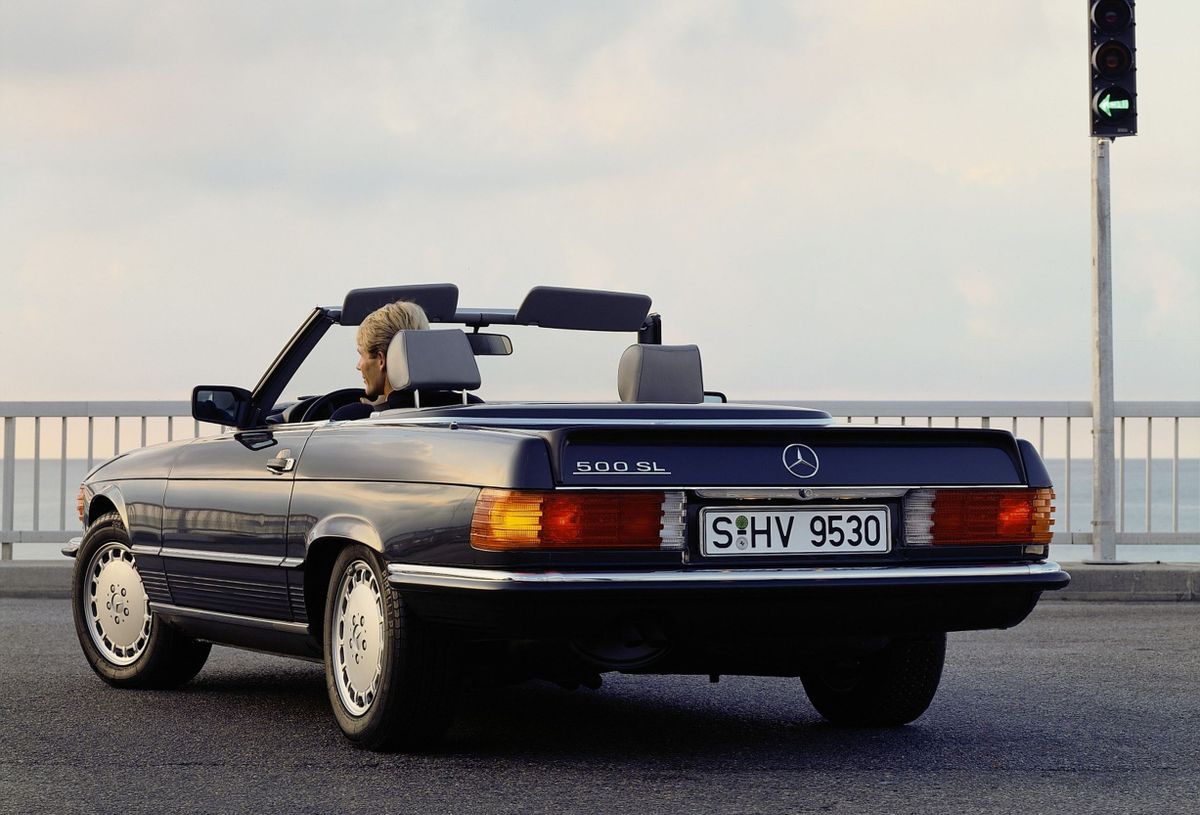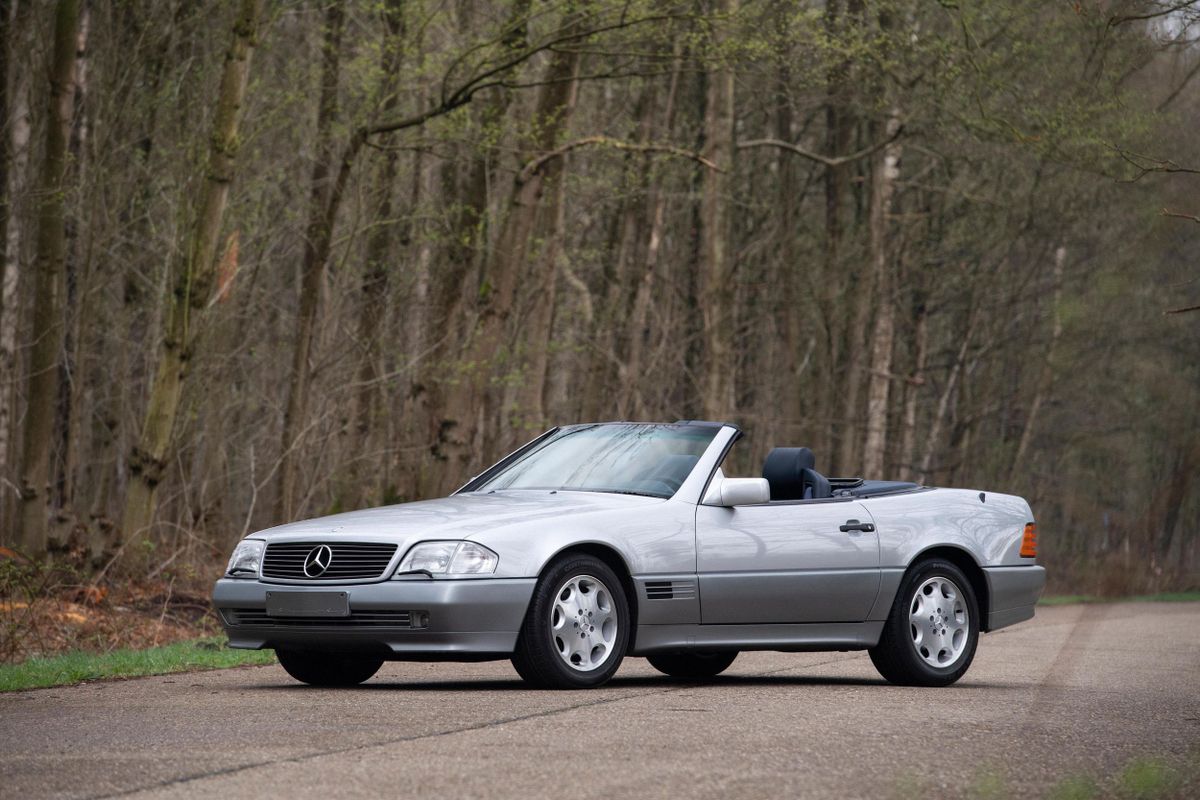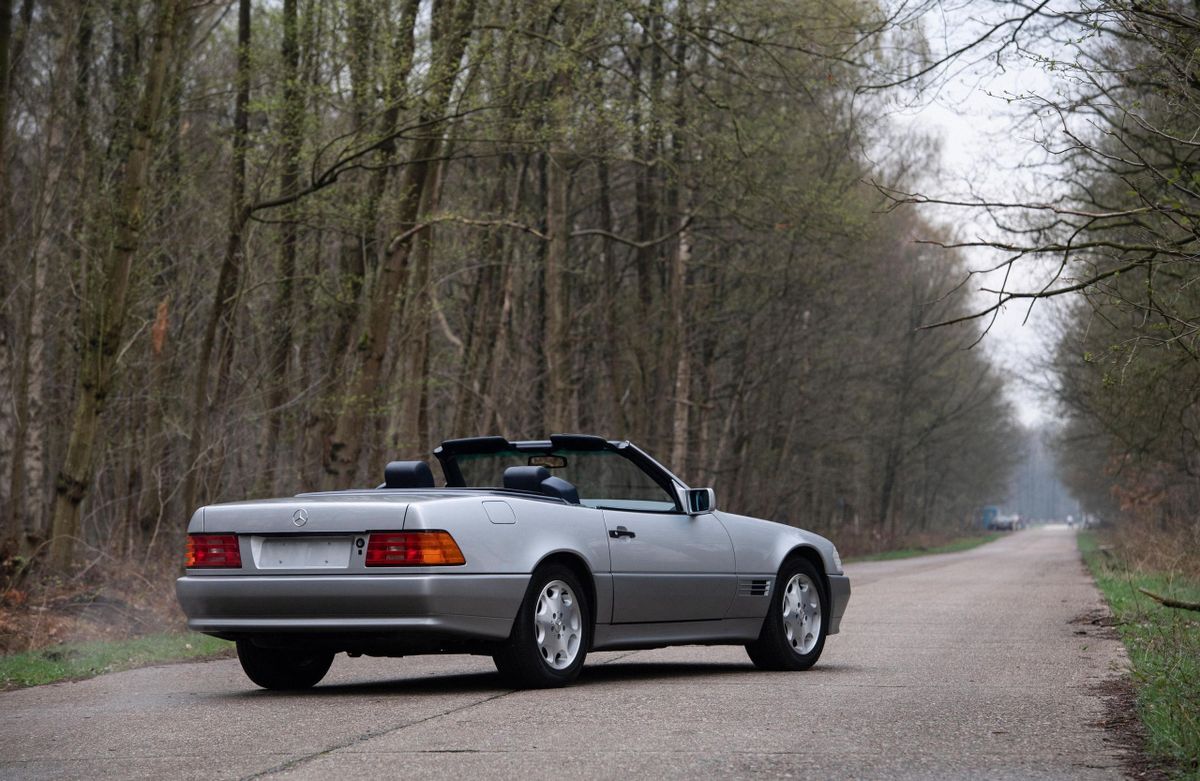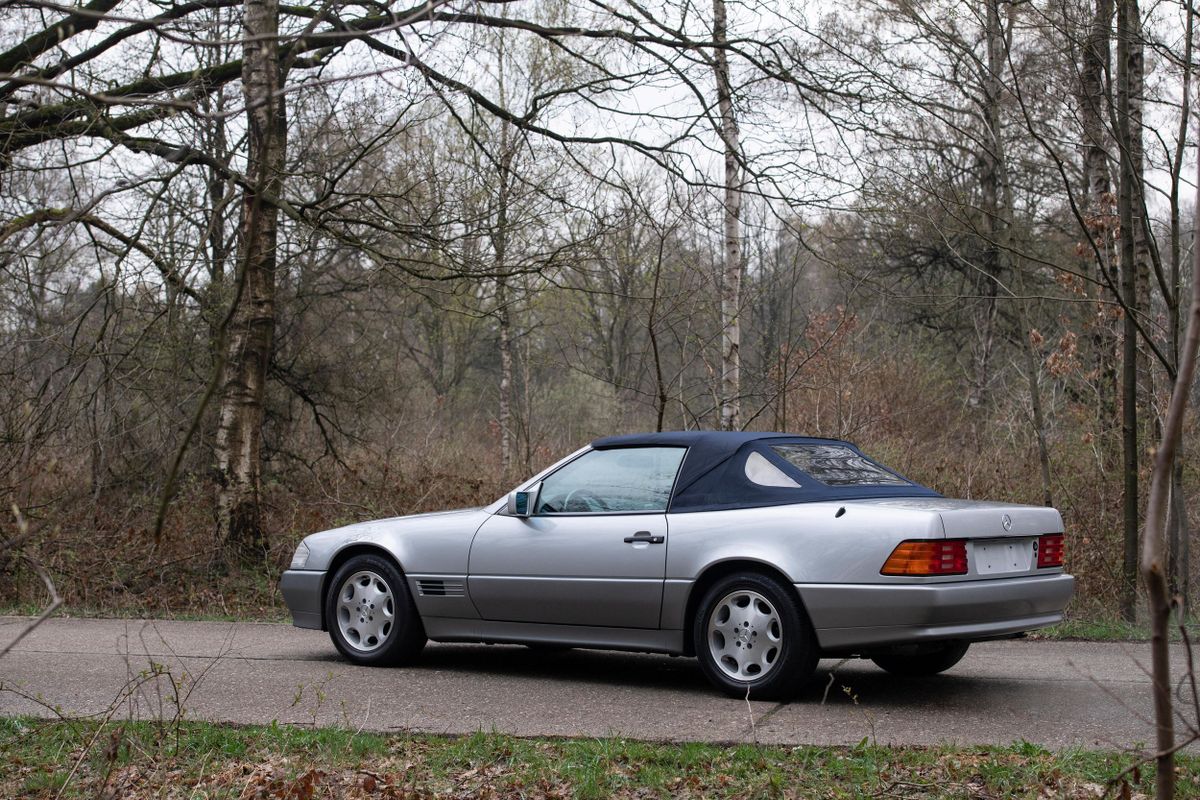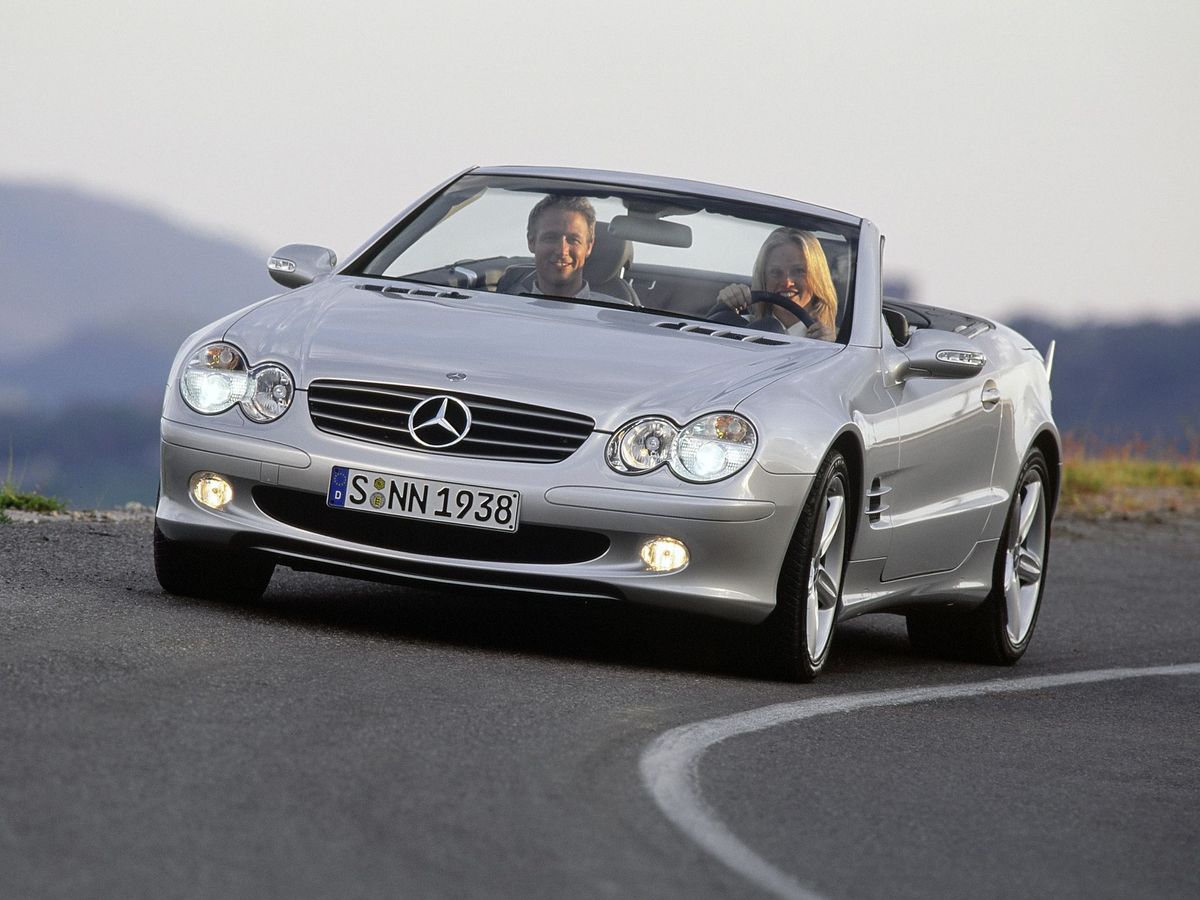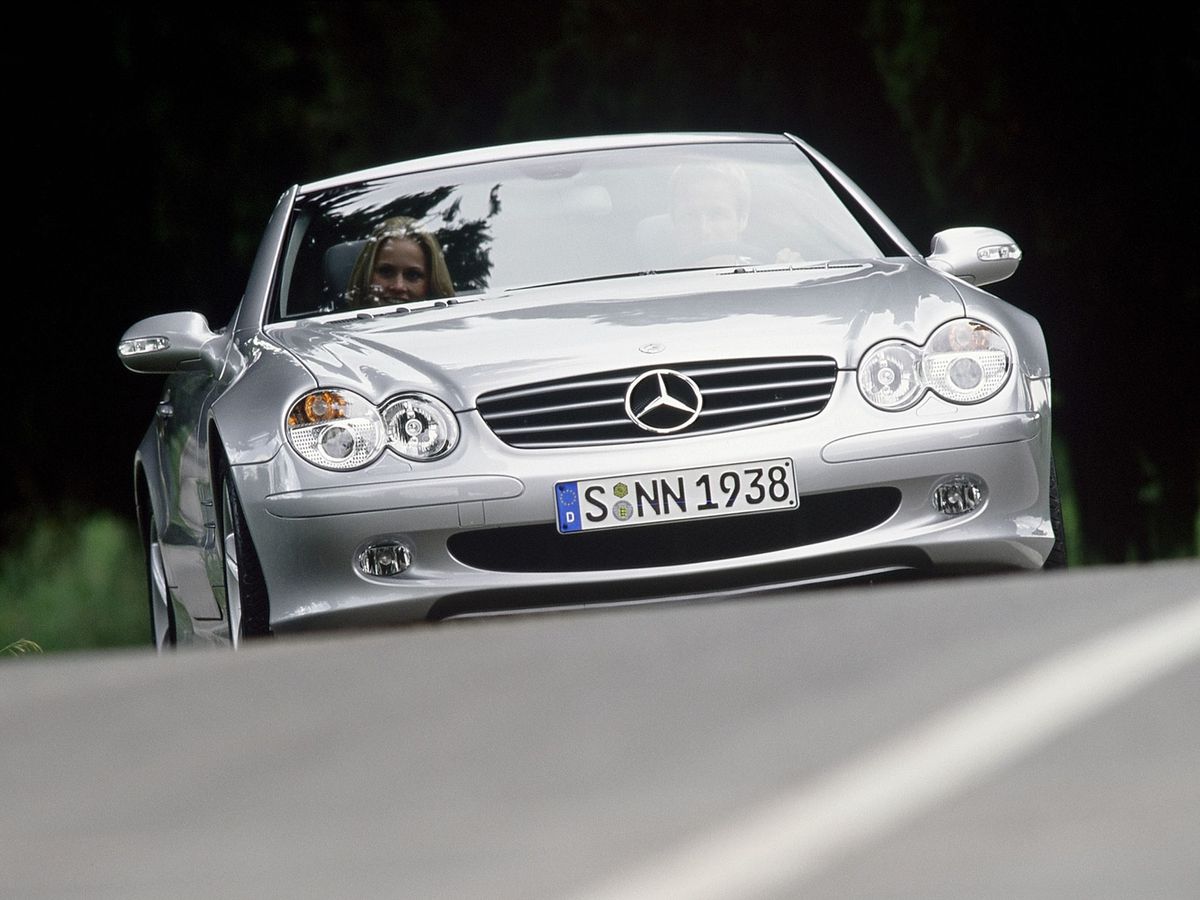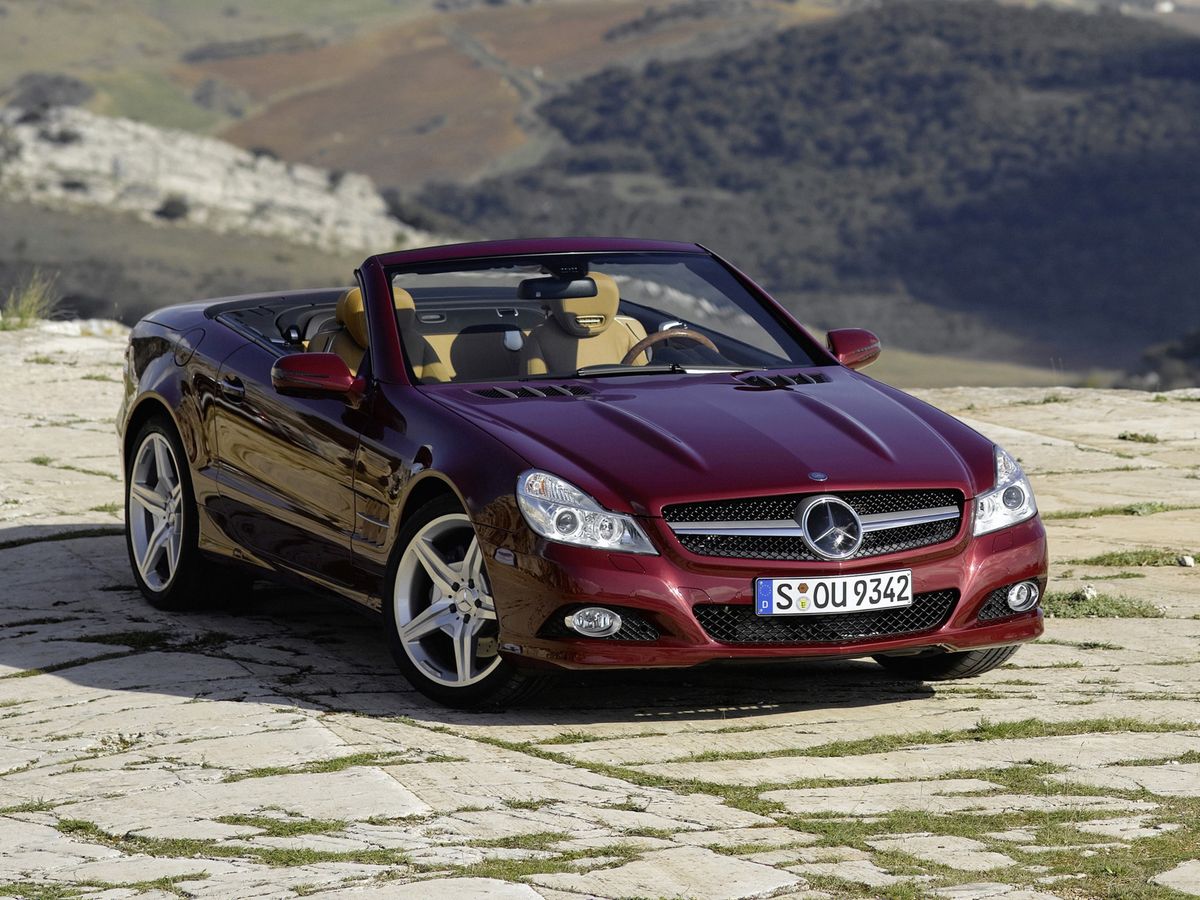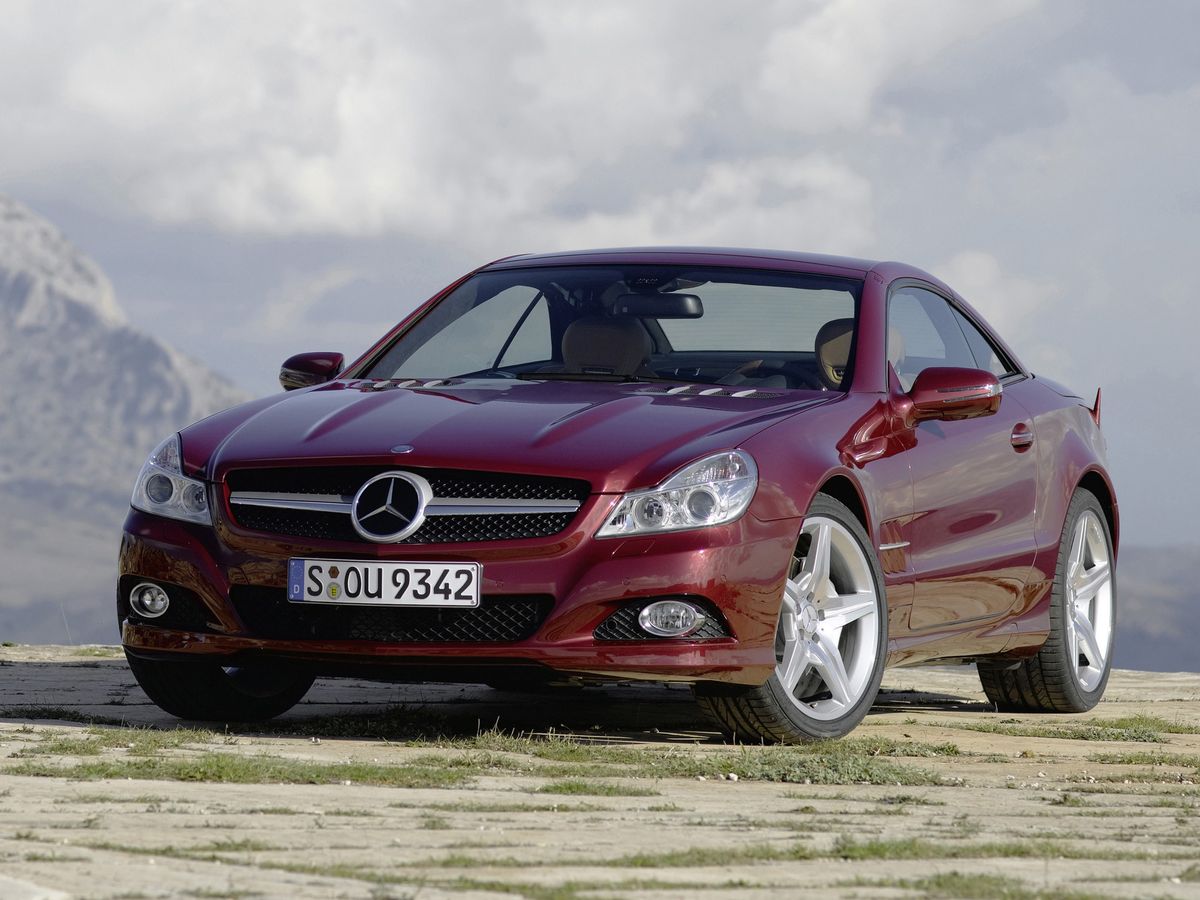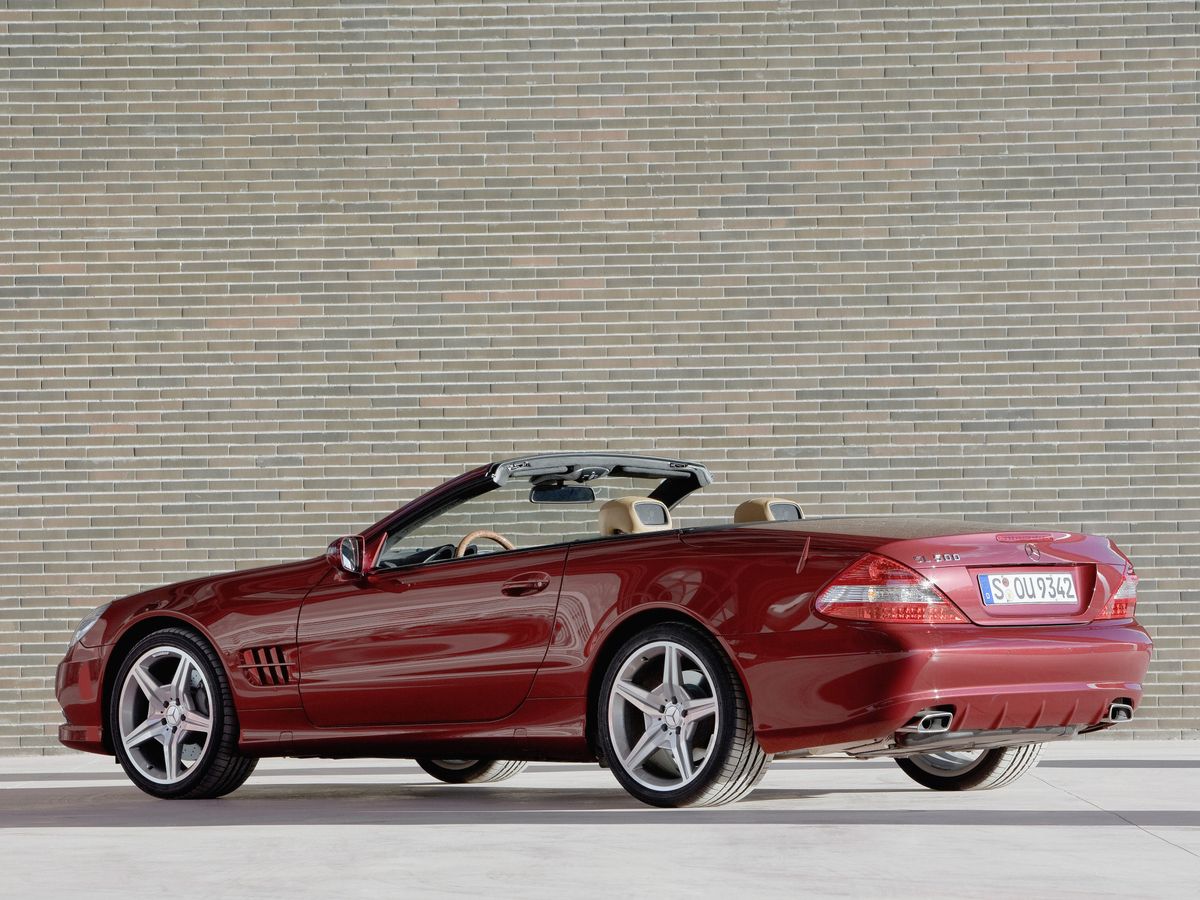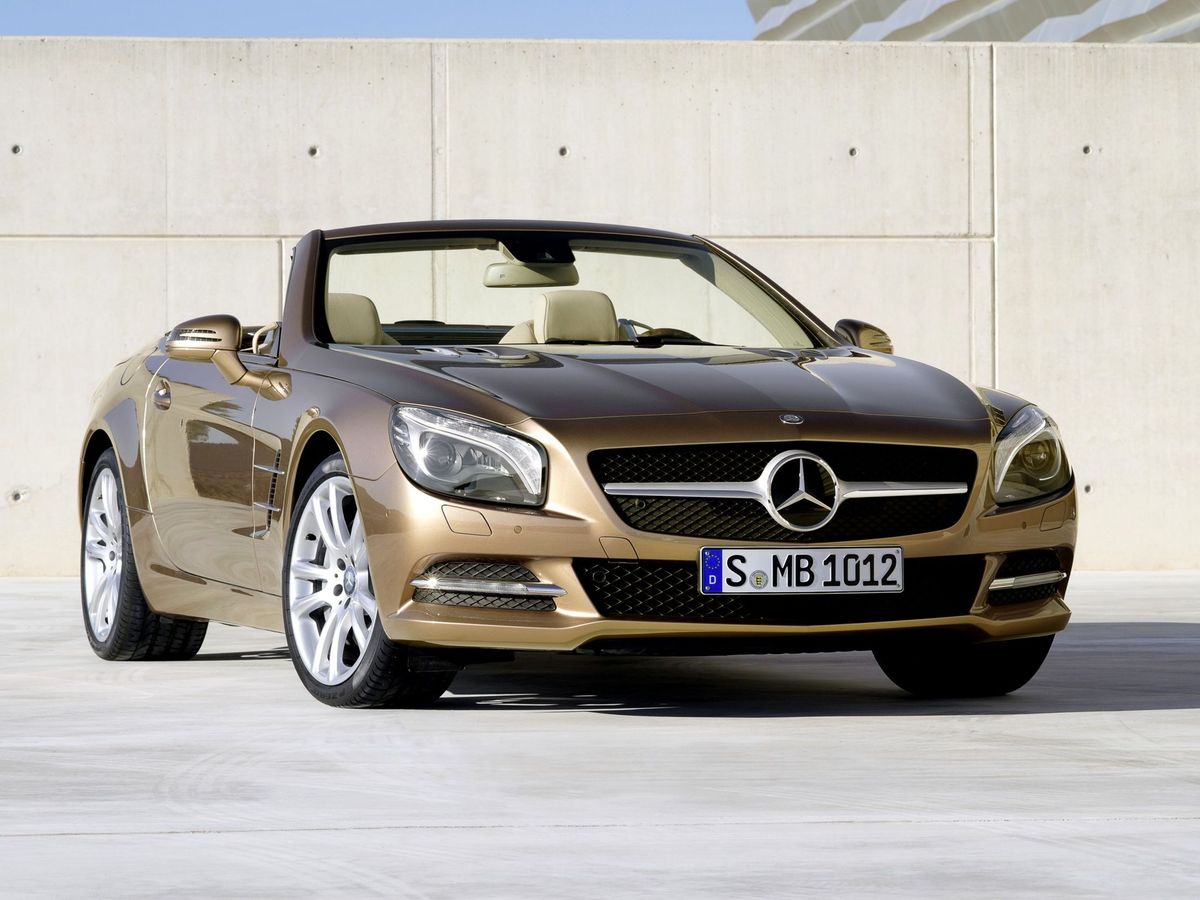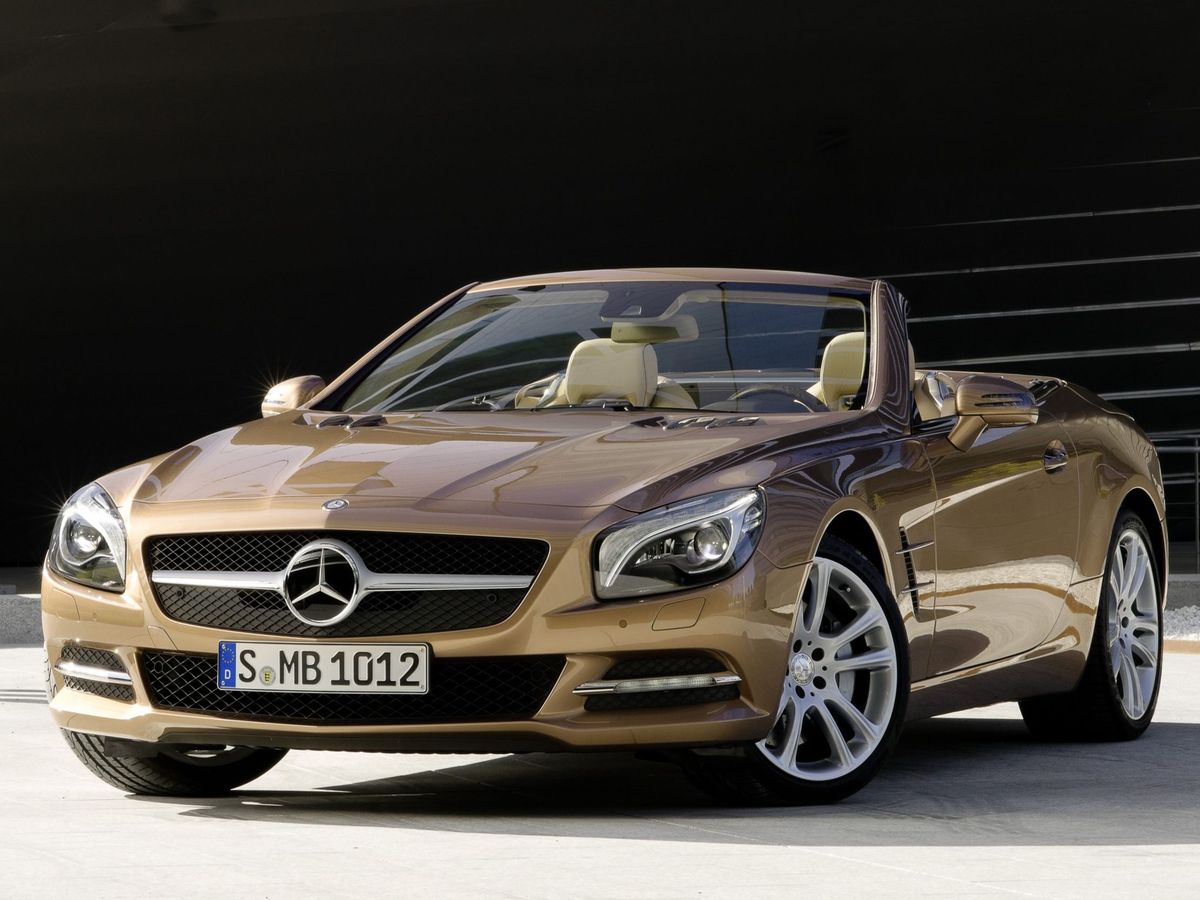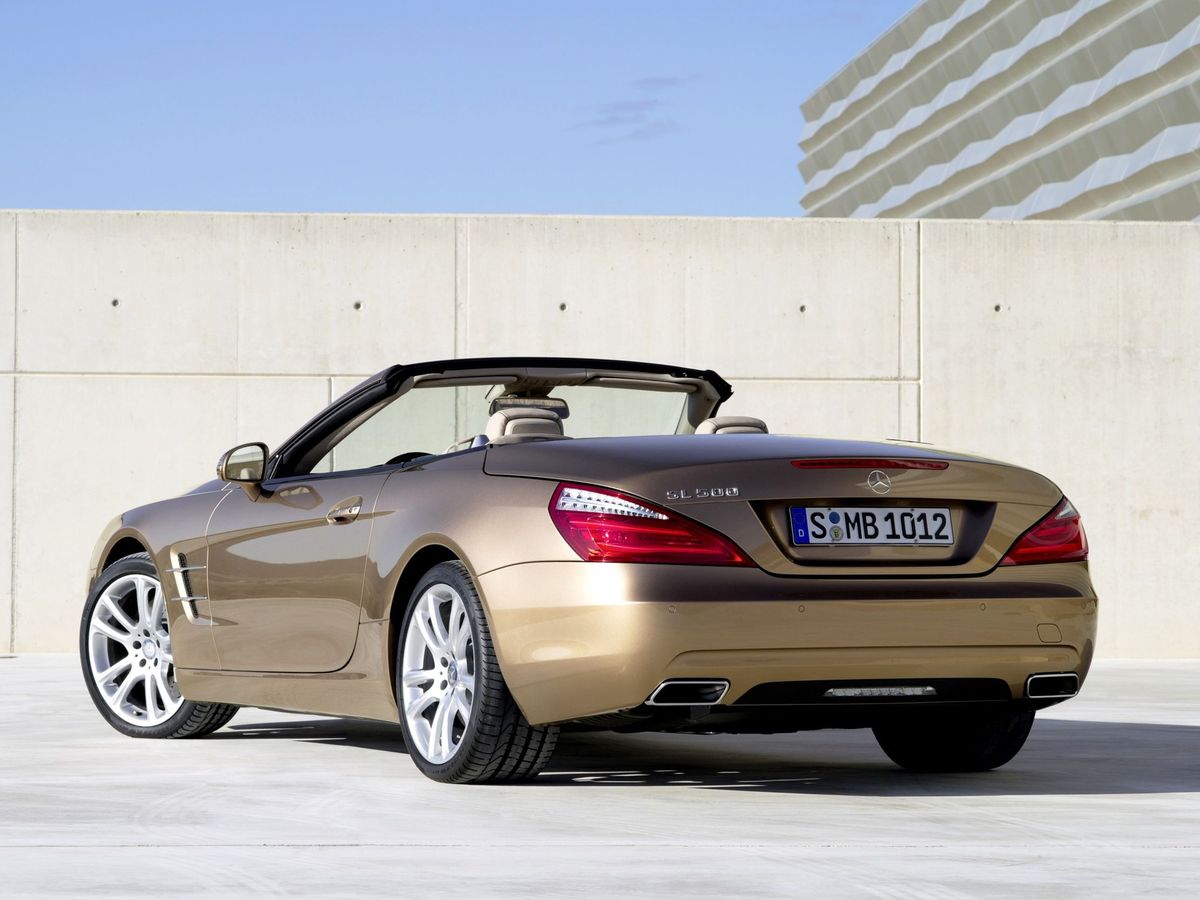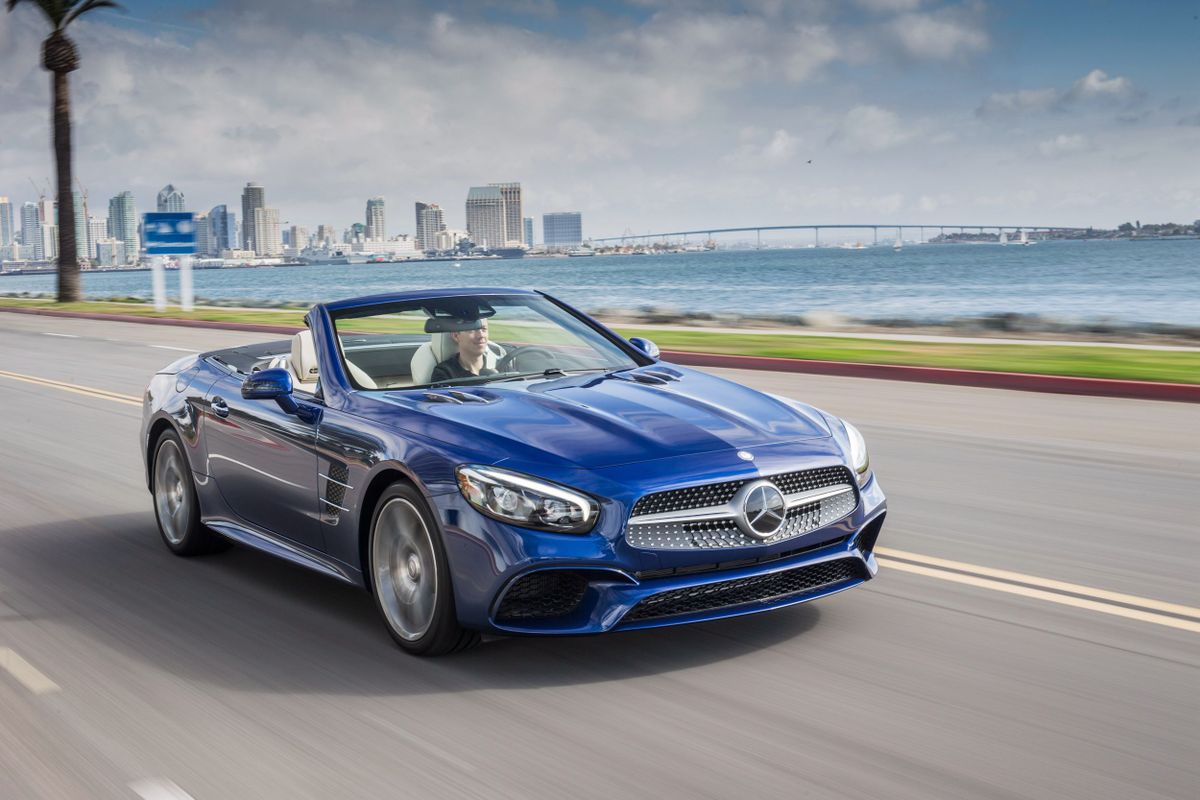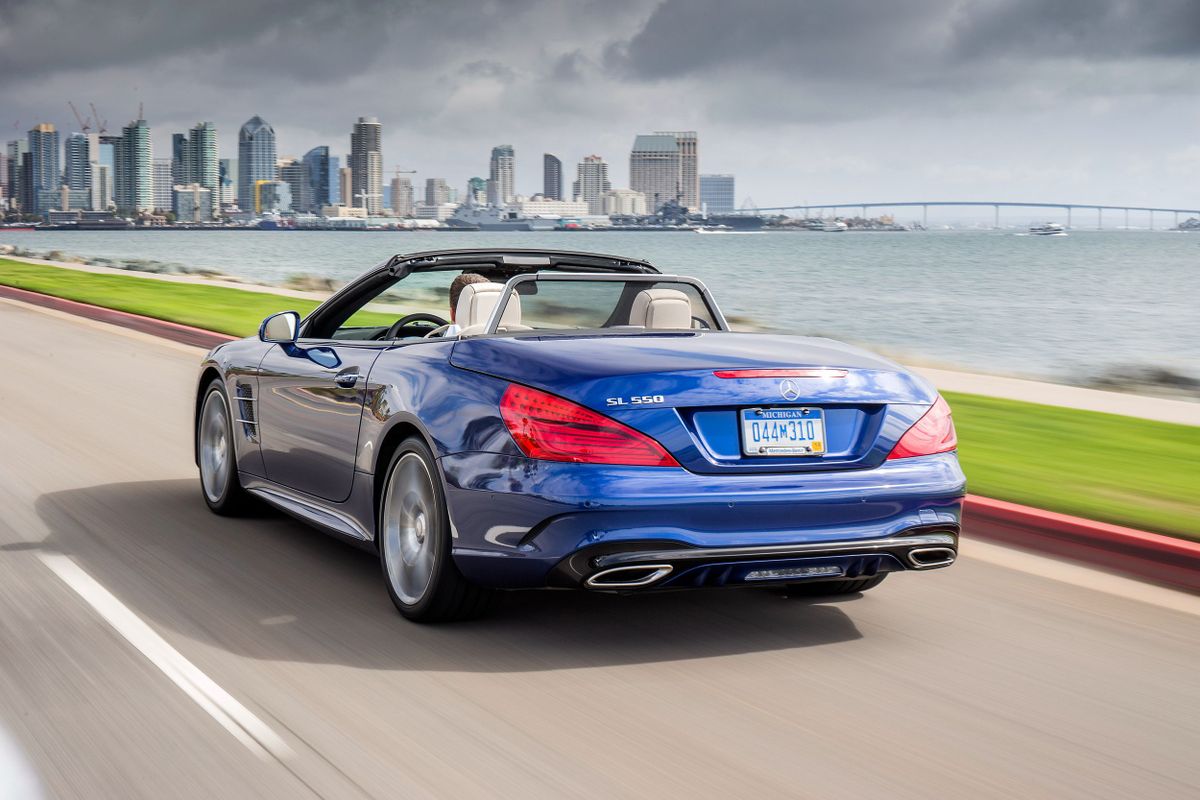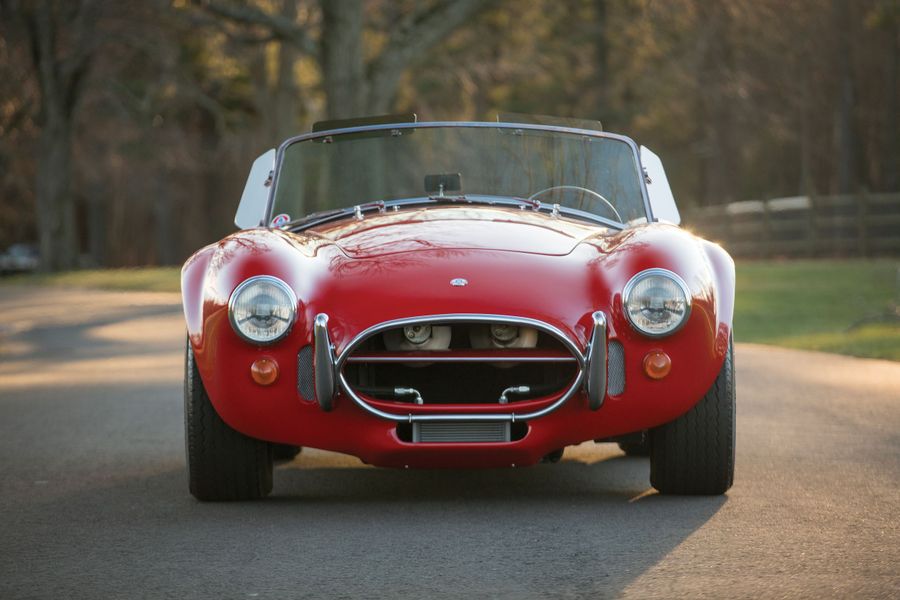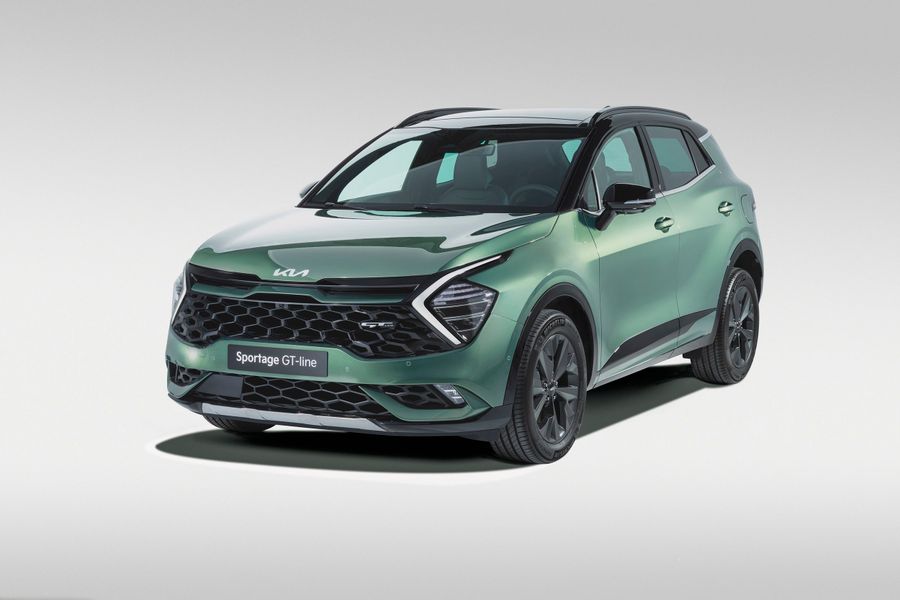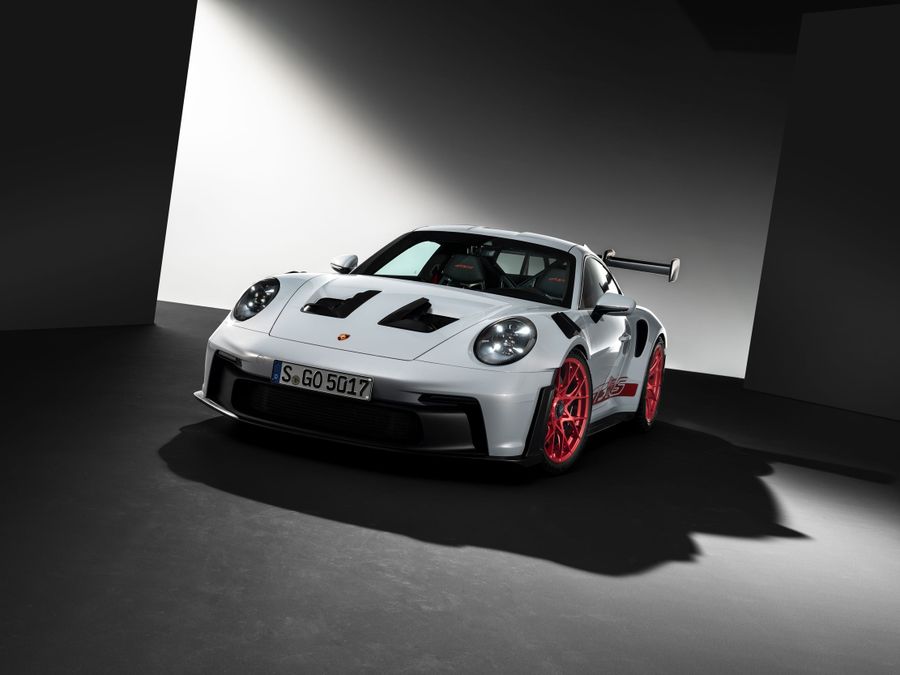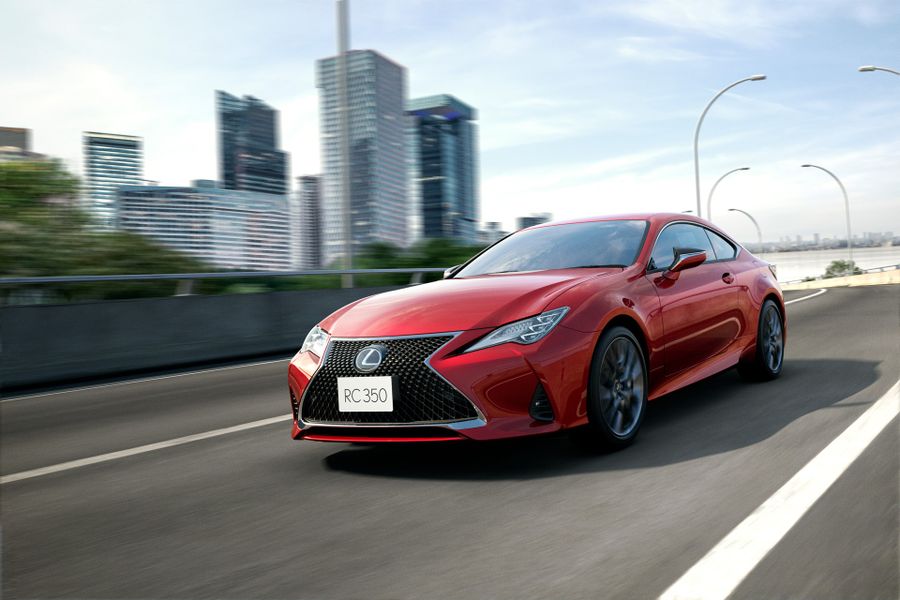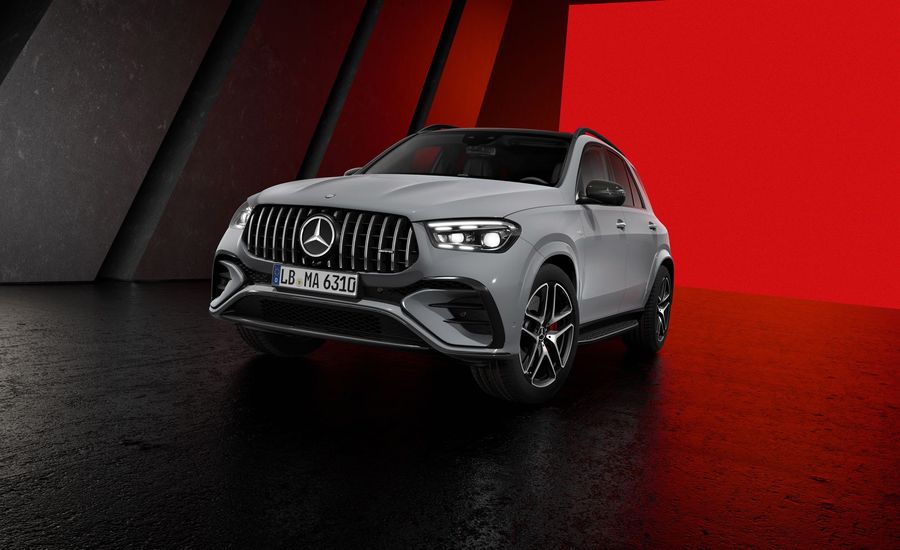
Mercedes SL-Class. From legend to dream
The Mercedes SL is a series of lightweight sports luxury cars manufactured by Mercedes-Benz (Germany) since 1954. The model belongs to the Gran Turismo class. It used to be produced in coupe, cabriolet and roadster bodies, while now there is only a 2-door 2-seater roadster. A new, seventh generation of the legendary model is expected to be released soon. It is known that the new Mercedes SL will share the platform with the new AMG GT coupe, but the company chief designer has already promised that the difference between them will be ‘clearly distinguishable.’ It is assumed that the newcomer will acquire a lightweight fabric top instead of a heavy metal top, an interior with a 2+2 layout, a wide range of powertrains and all-wheel drive. In anticipation of the new model, we will tell you the story of the iconic car.
Legendary ‘gull wings’
In the postwar period, Mercedes-Benz decided to revive its racing series. It’s hard to believe, but it took only nine months to make a ready-to-start sports car. In March 1952, the racing 300 SL (W 194) was presented to the press. And in May, a trio of Mercedes-Benz factory team “gulls” was preparing to take a start in the famous Italian Mille Miglia. The 1952 Mercedes-Benz W194 sports racing car successfully raced in the 24 Hours of Le Mans, the Mille Miglia, the Carrera Panamericana and other major motorsport events. Thanks to its victories, a racing Mercedes model became very popular. Consequently, in 1953, Mercedes-Benz management team decided to create a civilian version of this sports car.
But the 300 SL was remembered not even for its dynamics, but for the unusual design of doors, called the ‘Gullwing’. Such doors were dictated by necessity, not design. The sills were very high, so ordinary doors simply did not allow getting inside. Later ‘gull wings’ appeared on the DeLorean DMC12, Mercedes SLC AMG, Pagani Huaira and many other supercars.
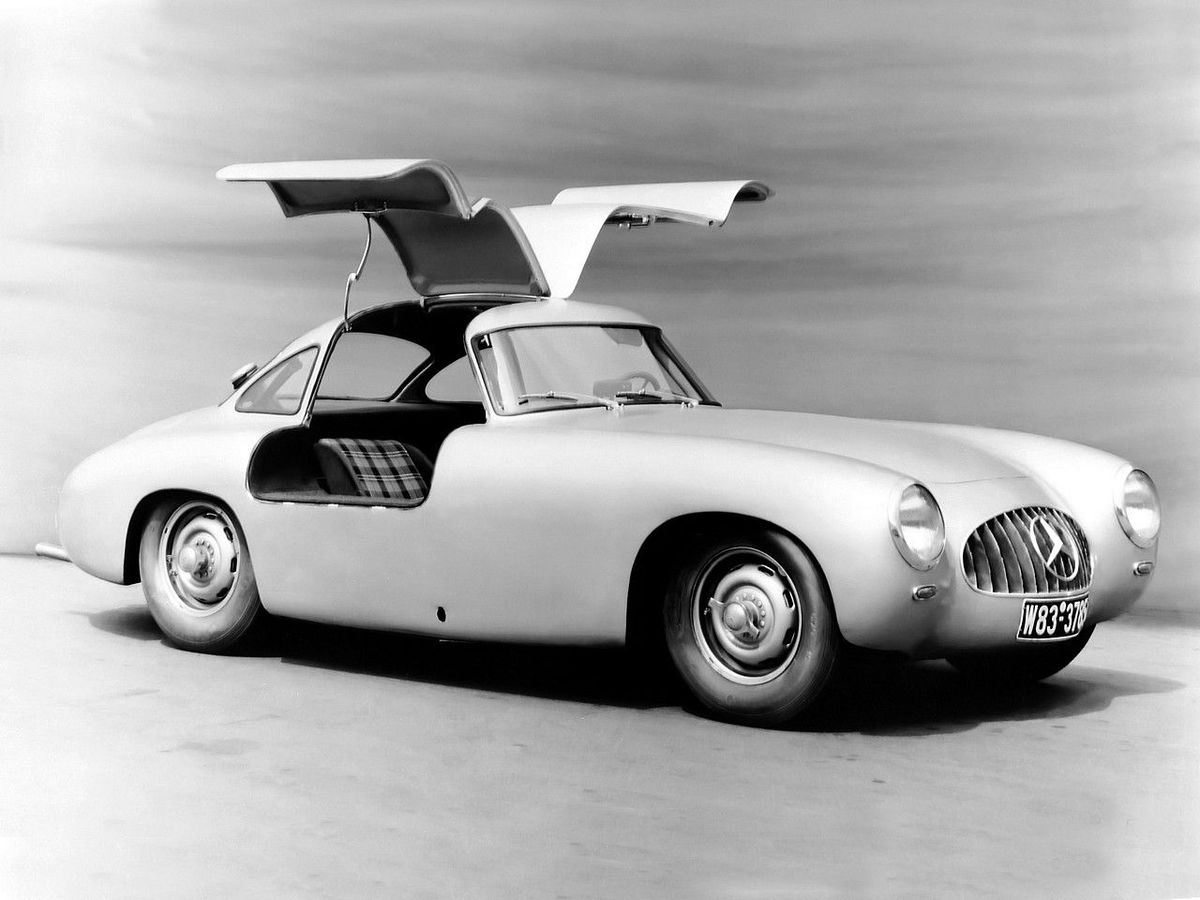
- For reference: A spatial frame made it difficult to equip the car with traditional swing doors, and the technical regulations did not specify the type of doors, so the main thing was to have at least some doors, no matter which. And the German designers built small doors for the 300 SL that opened upward. This is how the legendary ‘gull wings’ appeared and later turned into a symbol of coolness and style.
The first generation
It was produced from 1954 to 1963. The first representative of the Mercedes SL-Series (W198) was the 300 SL: ‘300’ meant the 3-liter volume of the 215 hp engine, and the letters ‘SL’ stood for ‘Sport Leicht’ (sporty and light). Based on a real sports car, it had a racing spirit in its genes. The Mercedes 300 SL accelerated to 100 km/h in 8.9 seconds, while the maximum speed was 224 km/h. The engine was coupled with a 4-speed manual transmission, which transmitted all the power to the driving rear axle. First, the 300 SL coupe was released. In 1957, a version with a hard or soft top appeared. The cabriolet’s frame was redesigned to install conventional doors (the gull wings are attached to the top, which was not available on that model).
The 300 SL road version turned out to be more civilized and heavier, but you could notice a direct connection with the Le Mans triumphant. The ‘gull wings’ and the brilliant aerodynamics were still there. Moreover, the engine was equipped with a revolutionary Bosch mechanical fuel injection system, which helped develop 215 hp. The production 300 SL (W198) received bumpers, rear-view mirrors, chrome decor and a more comfortable interior, but all the same, according to the apt expression of the newspapermen of those times, ‘even in a state of absolute rest, the 300 SL gave the impression of a car rushing at 200 km/h.’
The first Mercedes 300 SL was assembled by hand, so the batch was small, and the demand was high. Thus, in 1955, it was decided to release a ‘simpler’ and more affordable W121 version, called the 190 SL. The Mercedes 190 SL, built on the basis of a conventional sedan, was equipped with a modest 1.9-liter engine with 105 hp. However, it looked like everyone’s favorite 300 SL. Both cars are highly regarded by modern collectors and are considered “style icons”.
The second generation
It was produced from 1963 to 1971. The second representative of the SL-Class was no longer as legendary as the first, but also managed to stand out. The new Mercedes 230 SL was nicknamed ‘pagoda’, as it had an unusual concave top shape reminiscent of the architecture of oriental religious buildings. A coupe, a cabriolet with a soft top made of tarpaulin, or a cabriolet with a removable hard top were produced.
Moreover, the sporty Mercedes 230 SL became the first ever sports car built in compliance with the principles of passive safety. As a result, the middle part of the body, where the passengers sit, was as rigid as possible, and the front and rear ends of the car got easily crumpled in a collision, thereby absorbing the force of the impact. Seat belts and head restraints were optional. The 230 SL was equipped with a 2.3-liter engine with 150 hp. Later the manufacturer released the 250 SL and 280 SL.
The third generation
It was produced from 1971 to 1989. The third SL-Class became larger, acquired strict lines and an aggressive front face. At first, the 350 SL and 450 SL versions were produced with V8 engines with 200 hp and 225 hp (the number in the name still indicated the engine volume). But very soon, the manufacturer released a more fuel-efficient 280 SL, which produced a decent 185 hp. The reason for this ‘reorientation’ was the oil crisis, as a result of which oil prices skyrocketed. But as soon as it began to subside, Mercedes-Benz immediately introduced the 380 SL and even the 500 SL, which became the most powerful (240 hp). Then the volumes of the engines were increased up to 3 and 4.2 liters.
The fourth generation
It was produced from 1995 to 2001. The fourth SL-Class was installed on a shortened platform from the E-Class W124. The new comer with the body designation 129 successfully adjusted to modern design trends, partly thanks to the body shape, the front end of which was lower than the rear, which is typical of modern models, and earlier, on the contrary, the bodies with a line falling from the hood to the stern were more frequent. Another innovation was the safety bar behind the passenger seats, which, in the event of a rollover, significantly increased the chances of being safe and sound. In addition, the new SL was equipped with a variety of engines, ranging from in-line six-cylinder units to 6-liter V12 engines, the power of which varied from 190 to 389 hp.
The SL-Class Mercedes has always been described as incredibly beautiful, fantastically fast and terribly expensive…
During the lifetime of the fourth generation, two significant events took place. First, the German company changed the classification of the model names: the letters denoting the class were placed in front of the numbers (SL500 instead of 500 SL). Mercedes-Benz then bought AMG that had previously worked with it. So in the late 90s of the 20th century, such masterpieces as the SL55 AMG, SL60 AMG, SL70 AMG and SL73 AMG (which later shared its huge 525-horsepower V12 engine with the Italian supercar Pagani Zonda) were born.
The fifth generation
It was produced from 2001 to 2012, and was restyled twice in 2006 and 2008. The new Mercedes SL came only as a cabriolet with a hardtop, which independently folded using electric drives. The fifth generation SL-Class (R230) acquired a completely redesigned design and many technical innovations, such as the advanced adjustable Active Body Control suspension. The volume of engines ranged from 3 to 6.2 liters, while the power varied from 231 to 670 hp. AMG versions were indexed 55, 63, 65 and 65 Black Series.
The Mercedes SL65 AMG Black Series was a unique car that became the top-end model in the fifth generation SL range. The ‘regular’ SL65 AMG with a 6-liter twin-turbo V12 engine accelerated from 0 to 100 km/h in 4.2 seconds. And the Black Series received a 60 hp more powerful engine (thanks to more powerful turbines), was lighter by 250 kg and it had modified intake and exhaust systems. Therefore, it did not ride, but literally ‘flew’.
After the restyling in 2008, the exterior and interior of the Mercedes SL-Class looked so different that the model could well be mistaken for a new generation. The restyled 2008 SL is easily recognizable in everything from the shape of the headlights to the body lines.
The sixth generation
It was produced from 2012 to 2019. In 2016, the model was restyled. The latest (as of 2021) generation of the SL-Class represented by the Mercedes-Benz R231 was a luxury roadster, which was equipped with an electrically-powered hard folding top. The new Mercedes SL became longer and wider by about 50 mm and at the same time lighter by 140 kg due to the fact that many of its parts were made of aluminum. The exterior was redesigned, acquiring the new headlights, which many did not like due to the similarity with the C-Class optics, and a different radiator grille. But the interior remained almost the same. However, the steering wheel and dashboard were new.
The new Mercedes SL-Class had a sports chassis with independent multi-link front and rear suspensions. In addition, the roadster was available with two suspension options. Semi-active adjustable suspension was standard. There was also an optional active suspension with an ABC body level control system. In both cases, the suspension worked together with the new Direct-Steer electromechanical system with variable steering ratio.
2016 restyling
After the restyling in 2016, the radiator grille changed its shape, the shape of headlights began to resemble AMG GT optics, and the bumper acquired enlarged air ducts. The taillights also changed the pattern, and a massive diffuser appeared at the back. The options now include the active Curve Tilting system, which allows tilting the body inward of the turn by 2.65 degrees, operating at speeds from 15 to 180 km/h. This is done to increase the comfort of the driver and passengers, who are less inclined to the side. The model range still consists of four versions: the SL 400 and SL 500 as standard, as well as the styling AMG SL 63 and AMG SL 65.
The 2019/2020 Mercedes SL-Class offers a wide range of the most modern safety systems. The Mercedes-Benz Intelligent Drive package (stereo camera, short-range and long-range radar and perimeter sensors) activates the emergency braking system in front of a sudden obstacle, monitors the markings and keeps the car in the lane, provides active parking assistance, provides the most effective illumination of the road and does not dazzle oncoming drivers with fully LED adaptive headlights and Intelligent Light System. The Pre-Safe+ complements the standard Pre-Safe passanger protection system with protective measures in the event of a rear-end collision. The Magic Vision Control adaptive windshield washer system delivers water from the wiper blade as needed, depending on the direction of wiping, saves and warms water, ultimately improving visibility and increasing safety.

